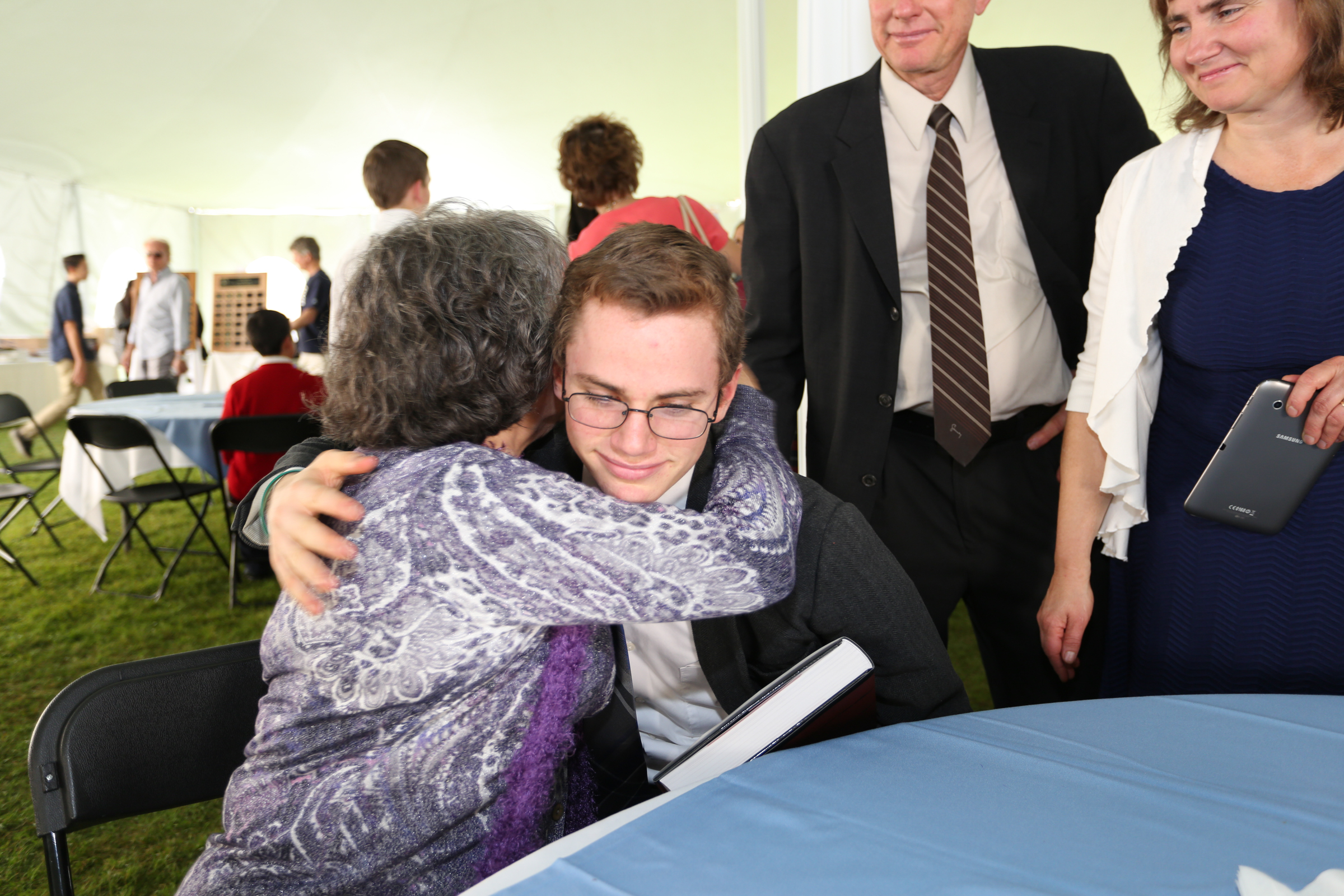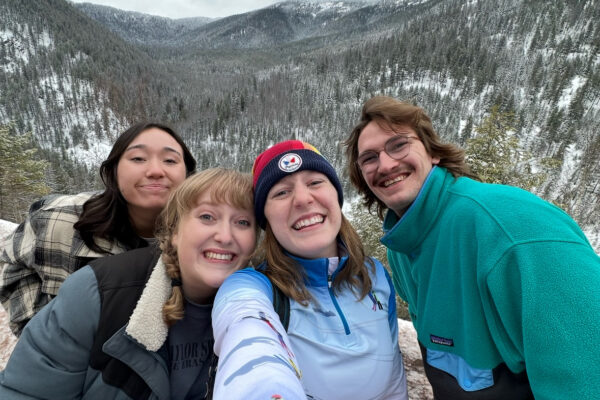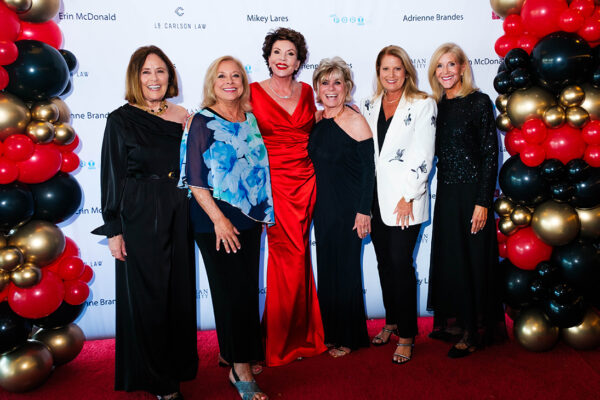How do you keep a memory alive? You give it away.
Memory, that most fragile, subjective, source of heritage is also our most powerful link to our past and the pasts of others. For Holocaust survivors, memories are often all that survive of beloved family and friends, homes and experiences taken away by the ruthless, concentrated efforts of the Nazi party.
Chapman University’s 17
th
Annual Holocaust Art and Writing Contest
‘s theme this year, “Telling it Forward: Making Memory Matter,” hones in on the transmission and subsequent preservation of Holocaust survivor memory.
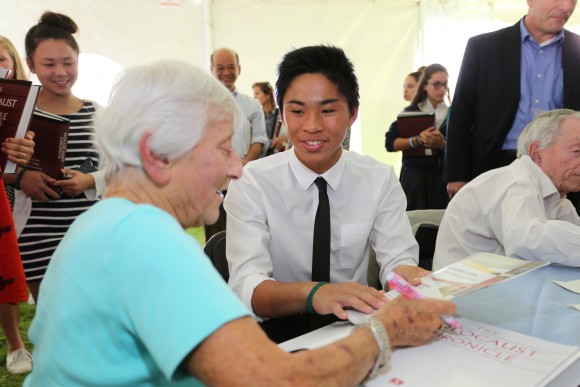
Survivor and student meet at the 2015 Holocaust Art and Writing contest, after the awards ceremony.
“For each student, there is always one memory to which they especially connect, the memory they know they will never forget and that they want to share with others, that they want to “tell forward,” the theme of this year’s contest,” said
Marilyn J. Harran
, Ph.D., director of the
Rodgers Center for Holocaust Education
and Stern Chair in Holocaust History.
“Sometimes the students have the extraordinary chance to meet the survivor about whom they have written in prose or poetry or about whom they have created a work of art or film. Those moments are truly magic. This year we will once again be honored to welcome Holocaust survivors and witnesses to the awards ceremony, and, in some instances, a member of their family—spouse, son or daughter. There is excitement, surprise, hugs, and often tears, as survivors and students meet—witnesses to the Holocaust and their witnesses to the future.”
More than 200 middle and high schools, 120 of which are from Southern California, have participated in this year’s contest. Many of these schools will be represented at the Awards Ceremony in Chapman’s Memorial Hall on March 4, 2016 at 11 a.m.
The ceremony is not just an announcement of the winners and finalists, it is also an opportunity for students to hear and view their peers’ submissions for the contest, presented by Chapman’s Rodgers Center for Holocaust Education. The
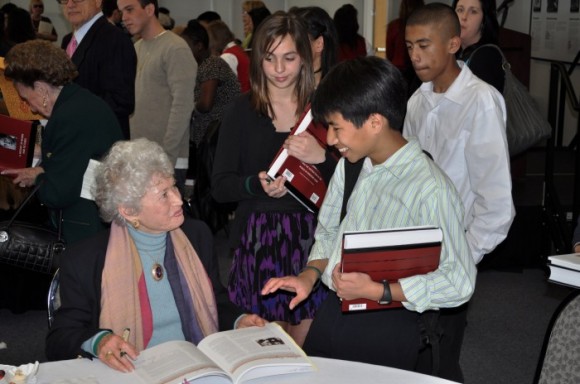
A student meets a Holocaust survivor at a previous Art and Writing Contest reception.
students, from public, private and parochial schools throughout Orange, Los Angeles, Riverside, Ventura, and San Diego counties submitted essays, poems, films and artwork to the contest. Those works were judged by a panel of Holocaust survivors, local businesspeople, professionals, organization leaders and Chapman faculty and students.
Dr. James L. Doti, Chapman University’s president for 25 years and a strong supporter of the contest since its inception, will deliver the keynote address focusing on history as both a means of looking backward and forward.
The Holocaust Art and Writing Contest, co-sponsored with The 1939 Society, now reaches students nationally and internationally with schools in South Africa, Canada, and Poland participating in this year’s contest. Three entries from each school are chosen for contest submission. More than 5,700 students from the U.S., Canada, Poland and South Africa initially responded to the prompt to interpret oral interviews with Holocaust survivors into their own compelling works of writing, poetry and art.
The Awards Ceremony, with nearly 1,000 attendees, is anticipated to be at capacity. The seats hold young students who are learning about the Holocaust for the first time and survivors, usually in their 80s and even 90s, who experienced the events of the Holocaust at first hand. By sharing their stories—telling them forward—these witnesses are teaching and empowering a new generation to be their witnesses to the future.
“Through the video testimonies made available to students in the contest by the USC Shoah Foundation Institute and The 1939 Society, the history of the Holocaust becomes real to students as they listen to survivors recalling the events that changed their lives,” Harran explains. “Through voices, faces and the power of their memories, history becomes personal and real.”
Each story is the gift of legacy, a trust to the future to carry words across the years. Over the last two decades, the contest has grown in scope – except in one area. Each year, Harran notes, the number of Holocaust survivors in attendance decreases, making the transmission of stories and memories even more vital.
The contest is presented in partnership with The 1939 Society and sponsored by the Samueli Foundation; Yossie and Dana Hollander; in cooperation internationally with The Forum for Dialogue for entries from Poland; Johannesburg Holocaust & Genocide Centre for those from South Africa; and both the Sarah and Chaim Neuberger Holocaust Education Center and The Vancouver Holocaust Education Center for those from Canada.
Following the ceremony, there is a reception where students, teachers, and Holocaust witnesses connect. Each participating student will be given a hardcover copy of
The Holocaust Chronicle
, donated annually since the first year of the contest by Publications International.
For more information, visit
www.chapman.edu/holocausteducation
.
Holocaust Art and Writing contest garners international entries Winners and finalists to be announced Friday March 4
